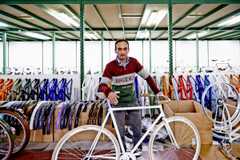Italian bicycles / Muggiò
Cycle chain
Emilio Aldo Renesto is a steelwork specialist whose frames are one of the first links in northern Italy’s small yet sturdy bicycle industry.
Monza may be known for its racetrack but the nearby village of Muggiò, 30 minutes drive northeast of Milan, also has a speedy export worth watching. Set back from an unassuming street, a large wooden door muffles the noise of hammering inside Emilio Aldo Renesto’s busy bike-frame workshop.
Using steel made in Cremona and then laser-cut in Brianza, both in Lombardy, Renesto has hand-molded frames in the same, high-ceilinged space for the past 45 years. Although technology has changed and his fortunes have peaked and dipped with shifts in the market, things here are much as they’ve always been since he opened up shop in 1969.
Renesto himself is quick to identify the secret of his company’s longevity. Although production levels have fallen from 3,000 frames-a-month in previous years to around 500-a-month today – it’s quality and not quantity that’s kept the cogs turning and the business current. “We decided to distinguish ourselves through our products,” he says. “We’re not interested in the mass-production market and we just can’t compete on volume.”
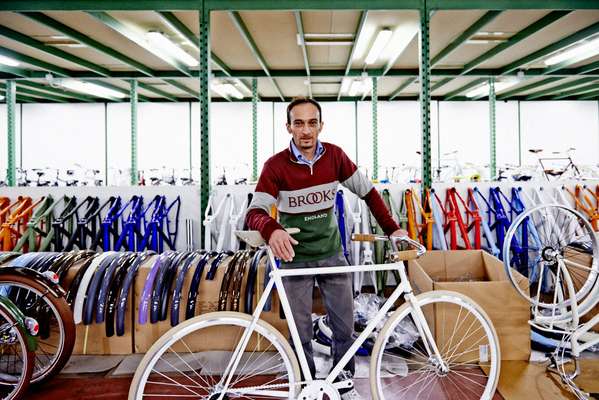

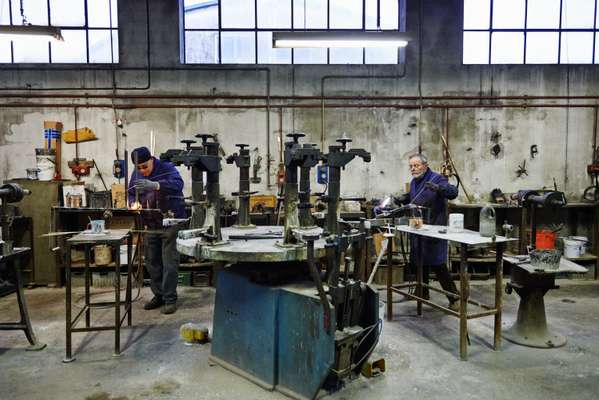
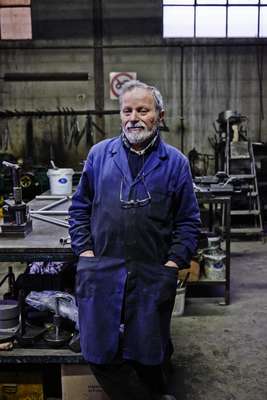

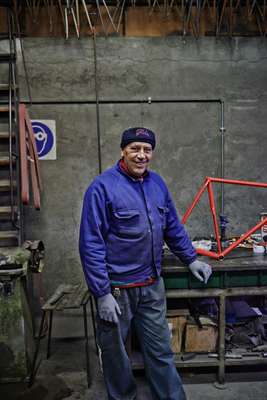
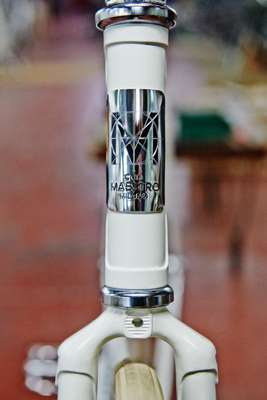
Big numbers can mean high profits but represent a market that Renesto has firmly and, as it turns out, wisely, ignored. Having briefly – and disastrously – experimented with using aluminium rather than steel for his frames, the master has learned to stick to what he does best and let the producers come to him for his skills. With the help of his highly skilled brother-in-law Luigi Nespoli (himself a 34-year veteran of the workshop) and wife Matilde, the skeleton team fulfill small, technically complicated orders for boutique producers, individuals and even racing teams.
Using between 15 and 20 pieces per frame, and hand-altering each one to his client’s specifications has also created a market for one-offs. When monocle visits, Renesto and Nespoli are hard at work on an unusual commission, even for them. Finishing touches are being added to a tandem bike with custom-made rear steering, manufactured on behalf of a blind bike racer. “We try to target a niche market,” says Renesto with a wry smile. “We have a number of high-profile brands in our portfolio but we prefer not to disclose them.”
One example that Renesto will discuss is Cicli Maestro. The Milanese start-up designs bikes created at Renesto’s factory and assembled two hours drive away at another essential link in the bike chain – Nico Battistello’s Cicli Blume (pictured far right). The Verona workshop assembles and adds the finishing touches to designs such as those of Cicli Maestro. This small cluster of firms’ stylish output for one another is the lifeblood of Italy’s traditional bike-building network and part of a wider renaissance of cycling culture on the streets of the nation’s traffic-choked cities, such as nearby Milan.
Renesto’s attention to detail can be seen in Cicli Maestro’s simple, pared-down frame that uses straight forks (blades that hold the front wheel in place). These determine a harder ride, while other customisations mean this 4kg Italian-steel track frame is made exactly to the brand’s carefully calculated ratio.
These special requests have turned Renesto into a shrewd businessman over the years. Tired of Italy’s renowned mettiamoci d’accordo (“lets make a deal”) culture, he now hedges his expenses by ensuring he’s paid up front and at a premium for his bespoke touch.
By stripping back his offerings, reducing output and concentrating on the small-scale, business models such as Renesto’s create success through careful, skillful work that is beyond the capabilities of many larger factories. The work also keeps Renesto, who is now in his seventies, on his toes. “The majority of our clients buy our products for the individuality,” he says smiling. “That’s the beauty of our work. Every product differs from the other.”
The process
- Straight ahead
Renesto stocks 6-metre-long steel rods in three radiuses embossed with serial numbers. The right fit
Fifteen to 20 components are welded into frames often inspired by Renesto’s deep vintage archive.Smooth operators
After the bike cools, the body is sanded and filed to eliminate rough or uneven joints.Perfect finish
After the paint has dried, the two-wheelers are accessorised and finishing touches, such as fitting the drive chain, are done by hand.

